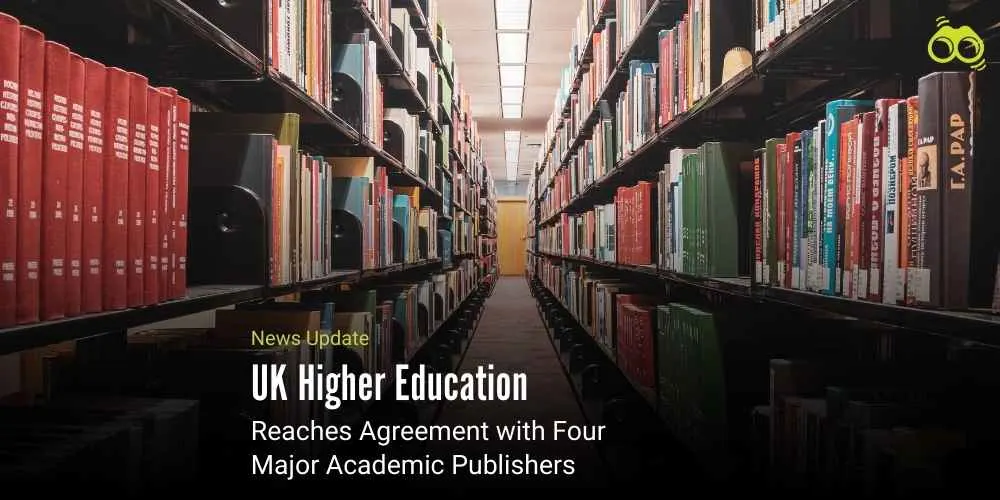Australia’s Education System Shows How Strategic Design Outperforms Size
Small Nation, Global Leader: Australia’s Universities Set a Benchmark in International Education
Australia’s rise as a global leader in education shows how smart planning can achieve more than size alone. With a population of just 26 million, smaller than Texas, the country has become the third most popular destination for international students worldwide. This success reflects the strength and reliability of Australian universities, which continue to perform better than expected and compete with much larger education systems. Australia’s achievement offers important lessons. It shows that focused investment, clear rules, and openness to the world can help a country build a strong and respected tertiary education system. By creating high-quality institutions and welcoming students from around the globe, Australia has become a trusted and recognised place to study.
Concentration on quality is perhaps one of the best features of the Australian system. Some 25% of its universities are rated in the world's top hundred. Indeed, among two Australian universities, they constitute the top 20, while six are ranked in the top 50 in the world. Such findings are not random. Rather, they represent enduring quality within a comparatively small yet focused tertiary education space. This concentration engenders very strong network effects. Within one national system, students enjoy multiple world-class choices. Teachers go back and forth between institutions, exchanging best practices. The common regulatory and funding framework for research enables such collaboration, rendering the system effective and efficient.
For every 33.6 Australians, one international student, the highest per capita rate in the world, joins the Australian education system. This is more than mere marketing success; it means students from around the world trust in the quality and worth of Australian programs of study. So, with the population size put at rank fifty-fifth, Australia is, after the United States and the United Kingdom, the third-largest recipient of international students. This faith is supported by solid results. Students contrast universities with borders and select Australia because of its established quality, career development, and yield on investment. Student precincts and student centres in many parts of the nation facilitate learners with academic and individual services, making the experience more rewarding and inclusive.
Australia's education system also ranks well on creative thinking, and it stands on par with top achievers such as Singapore, Korea, and Canada. This is an important skill for modern times, where automation addresses repetitive tasks and human worth is in solving problems and innovation. Professional development, inquiry into learning, and responsive thinking are skills that are emphasised by Australian universities to enable students to acquire future-proof competencies. Furthermore, the nation is a leader in sustainability and social impact education. Three of its universities appear in the world's top 10 for UN Sustainable Development Goals alignment. This indicates how institutions are embedding complex global issues in their curriculum.
Several factors explain Australia’s success. First, regulatory consistency. The Tertiary Education Quality and Standards Agency ensures that all institutions meet uniform standards, while still allowing them to specialise. Second, research integration. Students often engage with active research projects, gaining exposure to cutting-edge knowledge. Third, international diversity. Large numbers of overseas students provide multicultural learning environments, which enable domestic students to have global mindsets. Fourth, outcome accountability. Colleges are graded on graduate employment rates, which affect funding and prestige. This motivates institutions to prioritise career preparation and vocational skills.
For parents and students looking into studying international Australia, one needs to see beyond university names. System-level metrics like quality concentration, international diversity, and employment outcomes are equally important. For those seeking the top world universities for international students, one should look at the top 10 Australian universities for higher education that show consistently good performance in world university rankings for Australian universities. Teachers can take a cue from Australia's achievement in innovative thinking and educational innovation. Policymakers can learn from the nation's strategy for cultivating excellence through targeted investment, robust regulation, and receptiveness to foreign talent.
Australia's success defies the notion that strength is measured by size. With fewer resources than most peer countries, it has established an apparatus that produces high-quality output. The ranking of Australian universities in the world proves this effect, that intelligent design can surpass scale. For those interested in how to obtain a student visa for Australia, the system is well-organised and governed by official advice. Strong support networks and a friendly environment have kept Australia a prime destination for international students seeking quality education overseas.
Editor's Note:
Australia's emergence as a global education leader is a compelling lesson in the power of focus over scale. With only 26 million people, the nation has developed a tertiary education sector that recruits the third-highest number of foreign students in the world. This is not due to size or expenditure, but to intentional decisions in terms of quality, regulation, and international engagement. The Australian universities' strength is their concentration of excellence. When a quarter of the ranked universities show up in the world's top 100, and a few of them show up in the top 50, it indicates more than a one-off success. It shows a system that has been engineered to produce constant, high-quality results. The students are able to enjoy several world-class choices under one national umbrella, backed by common standards and cooperative research environments.
Australia's attractiveness to global students is also supported by statistics. Having one international student among every 33.6 citizens, the largest ratio in the world, indicates students have faith in the worth of Australia's study programmes. They prefer Australia not only for reputation, but for career preparedness, friendly support, and investment return. Having student hubs and student centres in and around the country supports this experience. Notably, Australia's education system excels in matters that count for tomorrow. Its high achievement in creative thinking, sustainability, and social impact education indicates that schools are equipping students for the challenges of life. The incorporation of professional development in teaching, exposure to research, and multicultural learning environments equips students with the necessary skills to survive in a dynamic world.
For teachers and policymakers, the message is plain. Australia's achievement is constructed upon regulatory consistency, outcome accountability, and openness to foreign talent. These synergistically combine to produce a system that achieves more with less. The Australian university ranking in the world attests that intelligent design can trump scale. For students and families exploring studying international Australia, it is worth looking beyond individual university names. System-level indicators, such as quality concentration, diversity, and employment outcomes, are just as important. Those seeking the best universities in the world for international students will find that the top 10 Australian universities for higher education consistently meet global standards.
Skoobuzz highlights that Australia's higher education system, despite its imperfections, effectively demonstrates that smaller nations can lead in international education. This is achieved by prioritising quality, equity, and tangible outcomes, offering valuable and exportable lessons.
FAQs
1. Why is Australia considered a top destination for international students?
Australia is one of the most popular places for international students because it offers high-quality education, a safe and welcoming environment, and strong career outcomes. The country has a well-organised visa system, modern campuses, and a multicultural society. Students from around the world choose Australia's study programmes for their global recognition and practical learning approach.
2. What makes Australian universities competitive on the global stage?
Australian universities are globally competitive because they focus on quality, research, and innovation. Around 25% of Australia’s ranked universities are placed in the world’s top 100. Institutions often combine strong teaching with active research, giving students access to the latest knowledge and skills. Shared standards across the system also help maintain consistent quality, making Australia stand out in global education rankings.
3. How good is the Australian education system?
Australia’s education system is known for its high standards, creative teaching methods, and strong student outcomes. It performs well in international comparisons, especially in areas like creative thinking and sustainability. The system encourages problem-solving, inquiry-based learning, and teaching professional development, helping students prepare for future careers. It is also supported by clear regulations and accountability for graduate employment.
4. Which are the top-ranked universities in Australia?
Some of the top universities in Australia include:
University of Melbourne
Australian National University (ANU)
University of Sydney
University of Queensland
University of New South Wales (UNSW)
Monash University
These institutions often appear in the global university ranking for Australian universities and are recognised among the best universities in the world for international students.
5. What support is available for international students in Australia?
International students in Australia receive strong support through student hubs, student centres, and dedicated services on campus. These include help with accommodation, academic guidance, health services, and career advice. Many universities also offer language support, cultural activities, and peer mentoring to help students settle in and succeed. The country’s friendly environment and clear visa process make it easier to adjust and thrive.














0 Comments (Please Login To Continue)